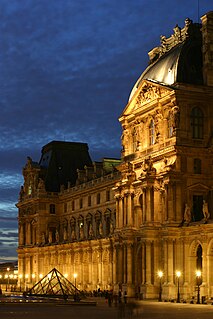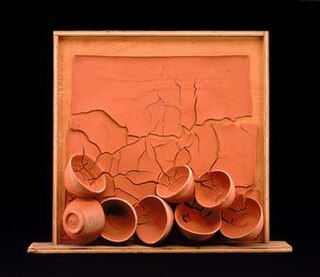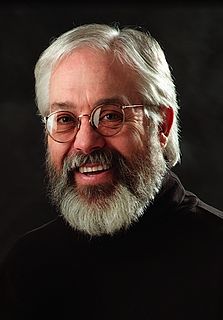Related Research Articles

The Smithsonian Institution, or simply, the Smithsonian, is a group of museums and education and research centers, the largest such complex in the world, created by the U.S. government "for the increase and diffusion of knowledge". Founded on August 10, 1846, it operates as a trust instrumentality and is not formally a part of any of the three branches of the federal government. The institution is named after its founding donor, British scientist James Smithson. It was originally organized as the United States National Museum, but that name ceased to exist administratively in 1967.

An art museum or art gallery is a building or space for the display of art, usually from the museum's own collection. It might be in public or private ownership and may be accessible to all or have restrictions in place. Although primarily concerned with visual art, art museums are often used as a venue for other cultural exchanges and artistic activities, such as lectures, performance arts, music concerts, or poetry readings. Art museums also frequently host themed temporary exhibitions, which often include items on loan from other collections.

The Smithsonian American Art Museum is a museum in Washington, D.C., part of the Smithsonian Institution. Together with its branch museum, the Renwick Gallery, SAAM holds one of the world's largest and most inclusive collections of art, from the colonial period to the present, made in the United States. The museum has more than 7,000 artists represented in the collection. Most exhibitions take place in the museum's main building, the old Patent Office Building, while craft-focused exhibitions are shown in the Renwick Gallery.

The National Museum of African Art is the Smithsonian Institution's African art museum, located on the National Mall of the United States capital. Its collections include 9,000 works of traditional and contemporary African art from both Sub-Saharan and North Africa, 300,000 photographs, and 50,000 library volumes. It was the first institution dedicated to African art in the United States and remains the largest collection. The Washington Post called the museum a mainstay in the international art world and the main venue for contemporary African art in the United States.

The Renwick Gallery is a branch of the Smithsonian American Art Museum, located in Washington, D.C., and focuses on American craft and decorative arts from the 19th to the 21st century. It is housed in a National Historic Landmark building that was begun in 1859 on Pennsylvania Avenue and originally housed the Corcoran Gallery of Art. When it was built in 1859, it was known as "the American Louvre".
Renee Stout is an American sculptor and contemporary artist known for assemblage artworks dealing with her personal history and African-American heritage. Born in Kansas, raised in Pittsburgh, living in Washington, D.C., and strongly connected through her art to New Orleans, Stout has strong ties to multiple parts of the United States. Her art reflects this, with thematic interest in African diasporic culture throughout the United States. Stout was the first American artist to exhibit in the Smithsonian’s National Museum of African Art.

Albert Paley is an American modernist metal sculptor. Initially starting out as a jeweler, Paley has become one of the most distinguished and influential metalsmiths in the world. Within each of his works, three foundational elements stay true: the natural environment, the built environment, and the human presence. Paley is the first metal sculptor to have received the Lifetime Achievement Award from the American Institute of Architects. He lives and works in Rochester, New York with his wife, Frances.

Chakaia Booker is an internationally renowned and widely collected American sculptor known for creating monumental, abstract works for both the gallery and outdoor public spaces. Booker’s works are contained in more than 40 public collections and have been exhibited across the US, in Europe, Africa, and Asia. Booker was included in the 2000 Whitney Biennial, received a Guggenheim Fellowship in 2005, and an American Academy of Arts and Letters Award for Art in 2001. Booker has lived and worked in New York City’s East Village since the early 1980’s and maintains a production studio in Allentown, PA.
Robert Ebendorf is an American metalsmith and jeweler, known for craft, art and studio jewelry, often using found objects. In 2003–2004, the Smithsonian American Art Museum organized an exhibition of 95 pieces, titled The Jewelry of Robert Ebendorf: A Retrospective of Forty Years.
Charles Radtke is a studio furniture maker working in Cedarburg, Wisconsin. His focus is design, rarely if ever repeating an object. His work is found primarily in private collections, with the exception of his Sarcophagus #1 residing in permanent collection in the Renwick Gallery of the Smithsonian Art Museum in Washington, DC and in the Museum of Fine Arts in Boston. The piece that is part of the collection in Boston, is on display at Milwaukee Art Museum, April 19, 2019 – August 25, 2019 as part of his exhibition: Charles Radtke: Contained.
Richard Deutsch is an American sculptor who works primarily in the Minimalist and Expressionist genres. Although his work ranges from small table-top pieces to multi-story sculptures, Deutsch "is well-known for his large-scale architectural and environmental projects."

Margaret A Boozer is an American ceramist and sculpture artist, best known for her clay and ceramic compositions, or landscapes, that focus on the individuality, history, and geology of the clay used as subject matters.

Elizabeth Broun was the director of the Smithsonian American Art Museum and the Renwick Gallery in Washington, D.C. for 27 years, from 1989 until December 2016. At the time of her retirement, she set the record as the second longest–serving Smithsonian museum director, after Spencer Fullerton Baird, and as the longest-serving female museum director in Smithsonian history.

Norm Sartorius is an American woodworker who carves fine art spoons in many styles including natural, biomorphic, abstract, symbolic, ethnic, and ceremonial. His works are in the permanent collections of the Smithsonian American Art Museum's Renwick Gallery, the Yale University Art Gallery, the Philadelphia Museum of Art, and other public and private collections. He is a frequent participant in woodworking and craft shows in America, and won the Award of Excellence in Wood at the 2015 American Craft Council show in Baltimore and the 2015 Smithsonian Craft Show in Washington, DC. Since 2008, he has co-directed a grant-funded research project on the life, work, and legacy of American woodworker Emil Milan.
Jolene Rickard, born 1956, citizen of the Tuscarora nation, Turtle clan, is an artist, curator and visual historian at Cornell University, specializing in indigenous peoples issues. Rickard co-curated two of the four permanent exhibitions for the Smithsonian’s National Museum of the American Indian.

Edith T. Martin is an American artist and museum professional.
Frank E. Cummings III is an artist and professor of fine arts at California State University, Fullerton. Cummings makes wood vessels and furniture using precious materials, inspired by spiritual meanings of objects in Africa.
Chris Gustin is an American ceramicist. Gustin models his work on the human form, which is shown through the shape, color, and size of the pieces.
Lloyd Eldred Herman is an arts administrator, curator and museum planner who is an acknowledged expert on contemporary craft. He is best known for being the founding Director of the Renwick Gallery of the Smithsonian American Art Museum in Washington D.C..
References
- ↑ Kim Schmahmann. "Official Site" . Retrieved November 6, 2021.
- ↑ "Brickbottom Artists Building". April 30, 2020. Retrieved November 6, 2021.
- ↑ "Bureau of Bureaucracy at the Renwick Gallery" . Retrieved November 6, 2021.
- ↑ Liz Karagianis (Fall 2000). "MIT Hobby Shop: Building Matters" . Retrieved November 6, 2021.
- ↑ "Five Pieces at Smithsonian Museums and Galleries You Shouldn't Miss". October 31, 2019. Retrieved February 16, 2020.
- ↑ "Apart-Hate: A People Divider at MAD" . Retrieved November 6, 2021.
- ↑ "Re: Collection Exhibition at MAD". October 31, 2019. Retrieved February 20, 2021.
- ↑ Judith Dobrzynski (November 24, 2010). "Africa and Its Spheres of Influence" . Retrieved March 11, 2021.